Kaspar Albrecht (1889-1970)
An Art Deco "Ruralist"
“Born in Au, in the Bregenzerwald, I attended a one-class Public School. While attending and after leaving it, I was forced to look for employment, being the oldest of seven brothers and sisters. I was a laborer, hired man and shepherd on the Alps.” Kaspar Albrecht, July 26, 1931
“The appreciative eye will pause and linger over the innumerable minute expressions of the artist----the personal touches of the hand of Kasper Albrecht…” Walter J. Pfister, The Sheboygan Press, August 14, 1931
When visiting Waelderhaus and other buildings in the Village of Kohler, Wisconsin, one may not immediately conjure images of Art Deco design elements most often associated with the 1920s and 1930s genre. However, creator Kaspar Albrecht’s various carvings, woodcuts, reliefs, stained glass, iron and pewter works, have something of a “rural” Art Deco feel and offer a nod to the modernity, geometry and flair of the times.
Albrecht, an Austrian architect and sculptor who led the building design of Waelderhaus between 1929–1931, earned a living as a commissioned artist, both at home in the Bregenzerwald region of Austria and abroad. A special project leading to his sojourn to Kohler not only delivered an exquisitely crafted building – Waelderhaus, (dedicated to the memory of John Michael Kohler, but also, a body of work as unique and resilient as the artist himself.
The “exceptionally artistic woodcuts of the Resurrection” (Sheboygan Press, August 14, 1931) that inspired Marie Kohler to seek out Kaspar Albrecht as an artist, as well as his wood carving of the Nativity and additional woodcuts with religious iconography showcase stylized geometric forms of sunbursts and stepped patterns that were hallmarks of the Art Deco movement.
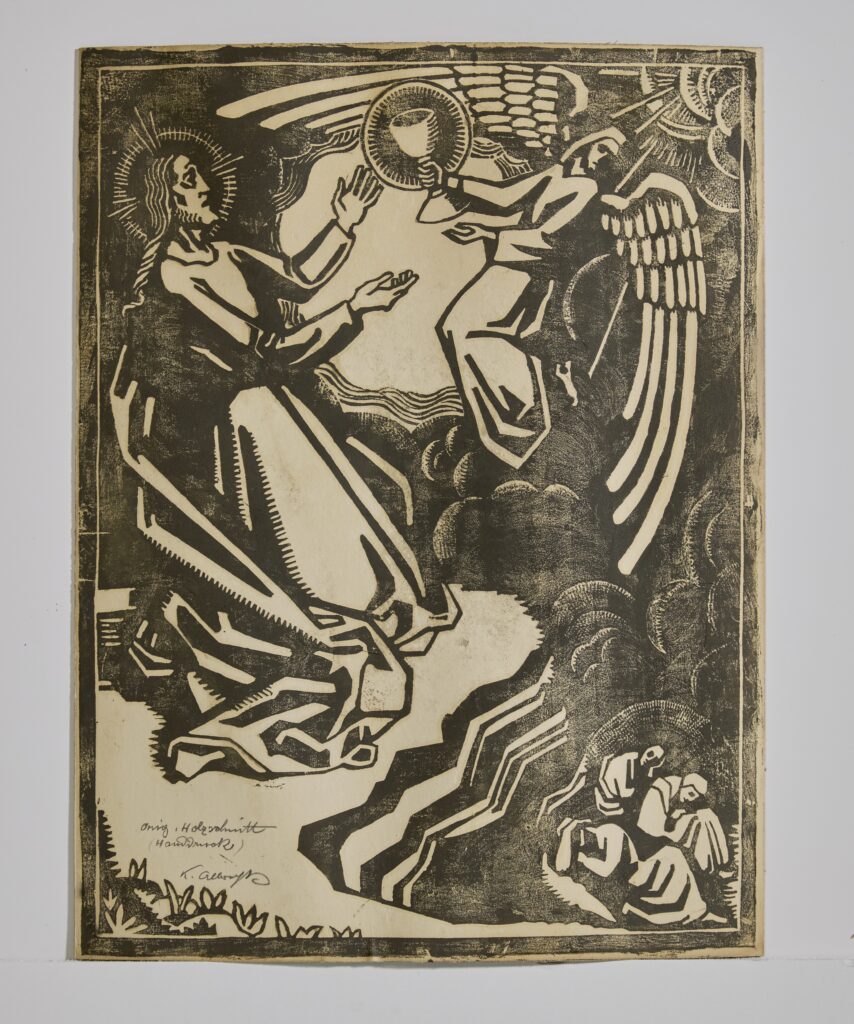
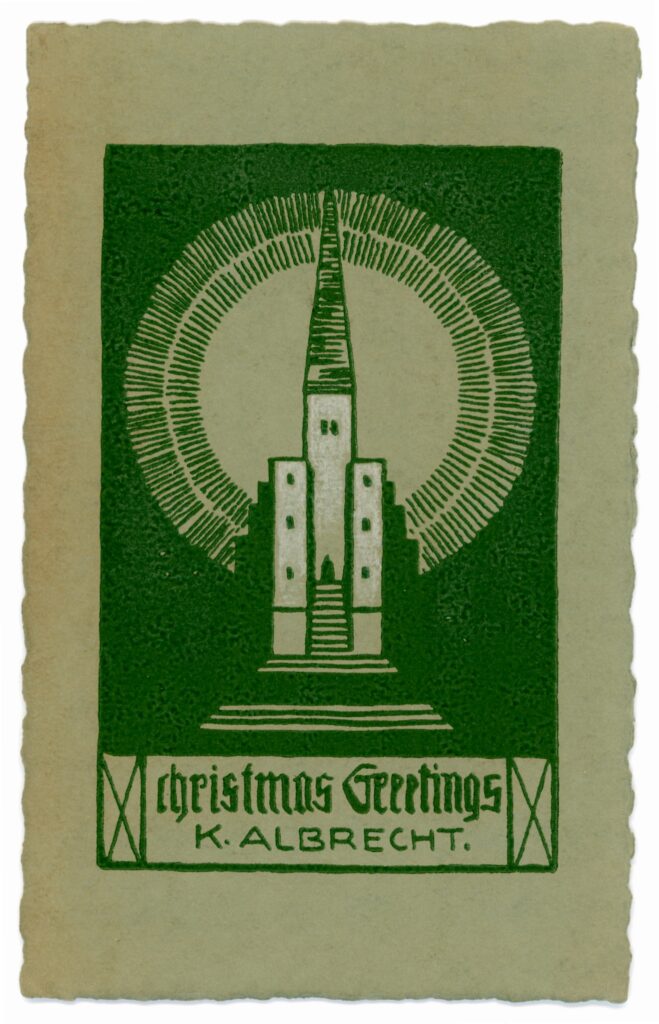
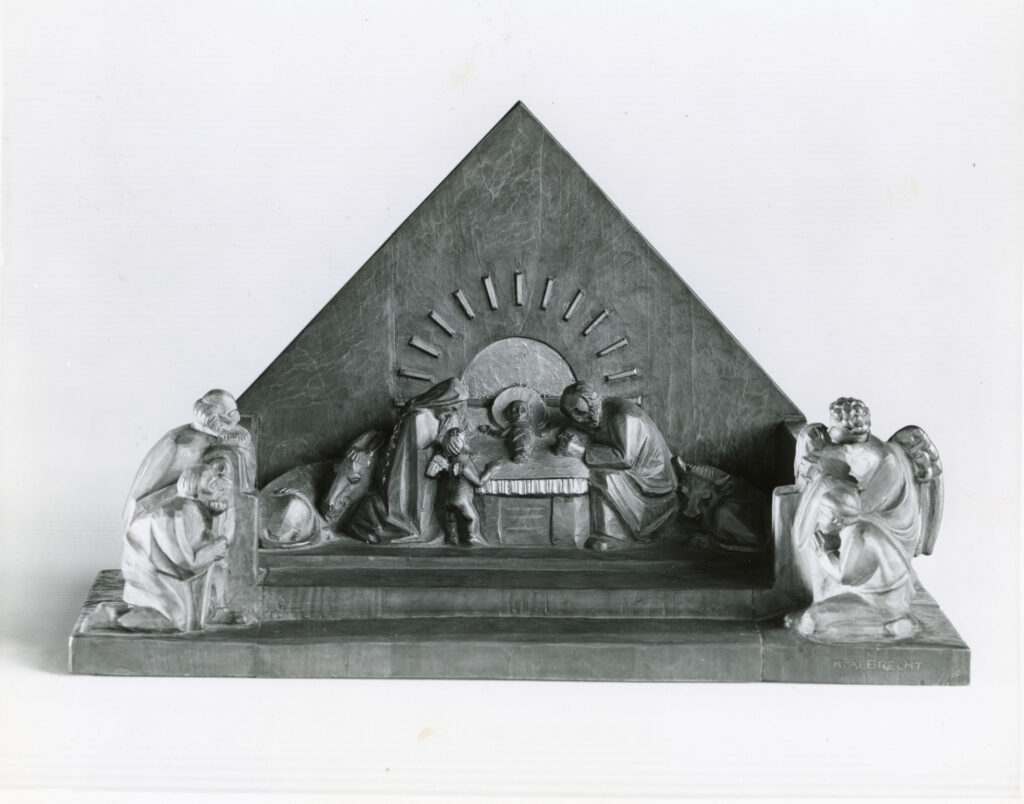
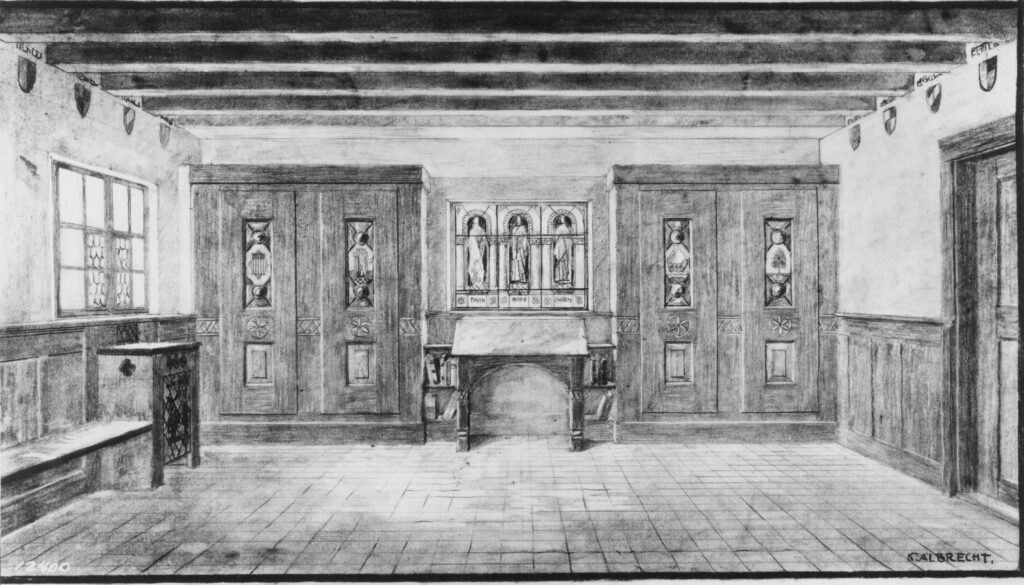
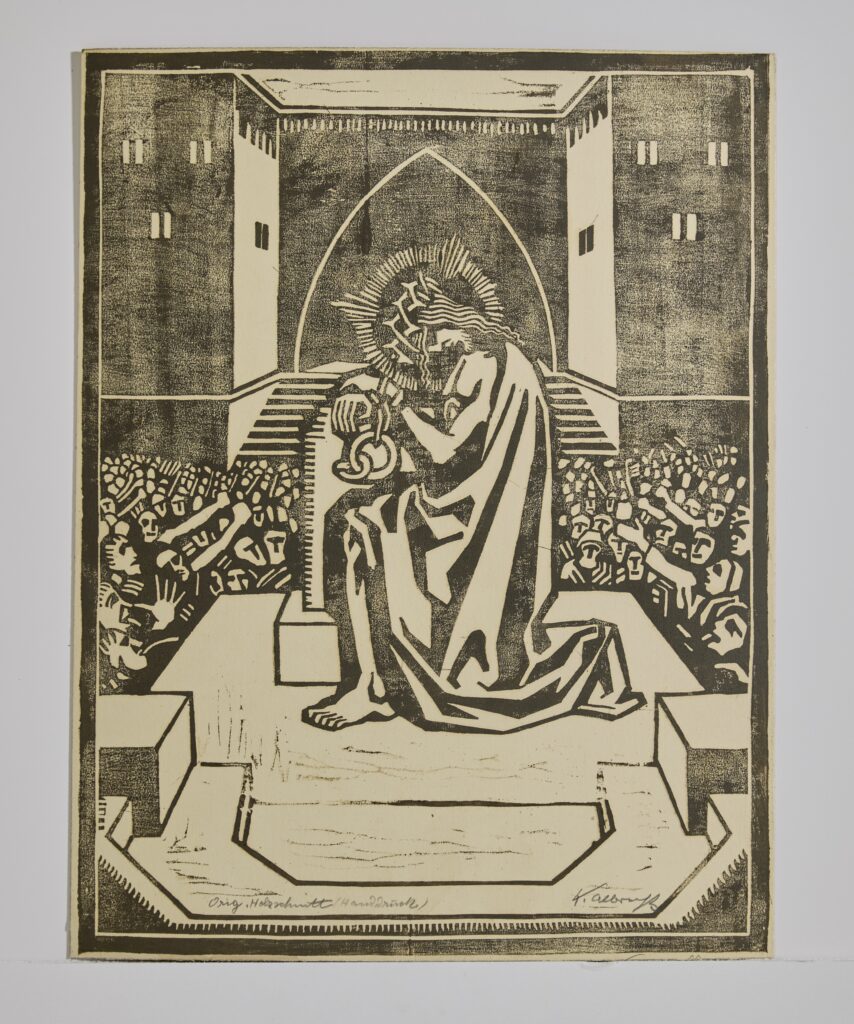
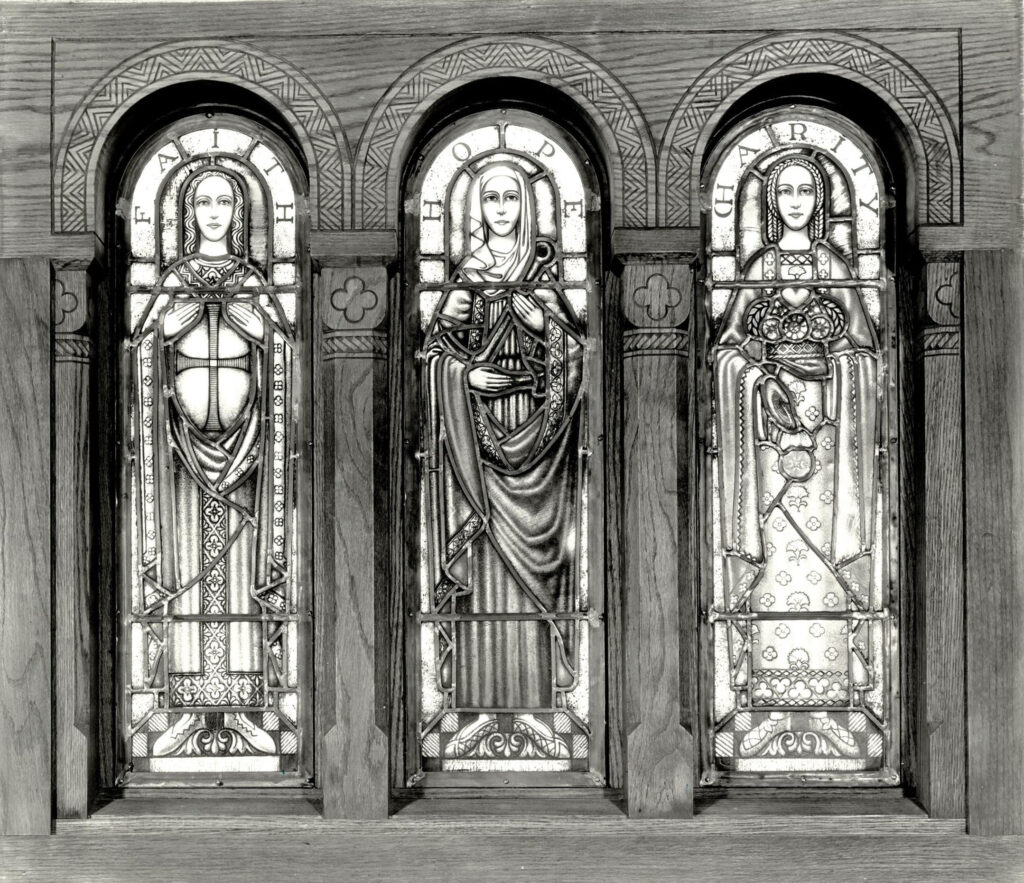
The Spring, Summer, Fall and Winter reliefs which flank the fireplace at Waelderhaus were designed and produced in the Kohler Pottery by Albrecht. Made of terra cotta, the reliefs are much less opulent than the typical luxurious materials used by Art Deco artists, however the reliefs skim the edges of the decorative arts with a rural twist.
The Baden Powell meeting room at the Waelderhaus also showcases a variety of Albrecht’s work most notably the stained glass windows of Faith, Hope and Charity framed in wood with geometric zigzag patterns and a relief of the Girl Scout Golden Eaglet emblem with a streamlined design and a tapestry depicting Joan of Arc, produced by Lorentz Kleiser after a drawing by Albrecht. And albeit a bit of a stylistic outlier the tapestry in conjunction with the other detailed work provide small insights into an art deco influence and the breadth of his artistic vision. An additional feature on each floor of the Waelderhaus includes decorative drinking fountains carved by Albrecht. “They are of special design, one having the face of a boy; the other the three good uses of water, for drinking, for industry and as a protector from fire; the third a bronze statue of Girl Scouting.”
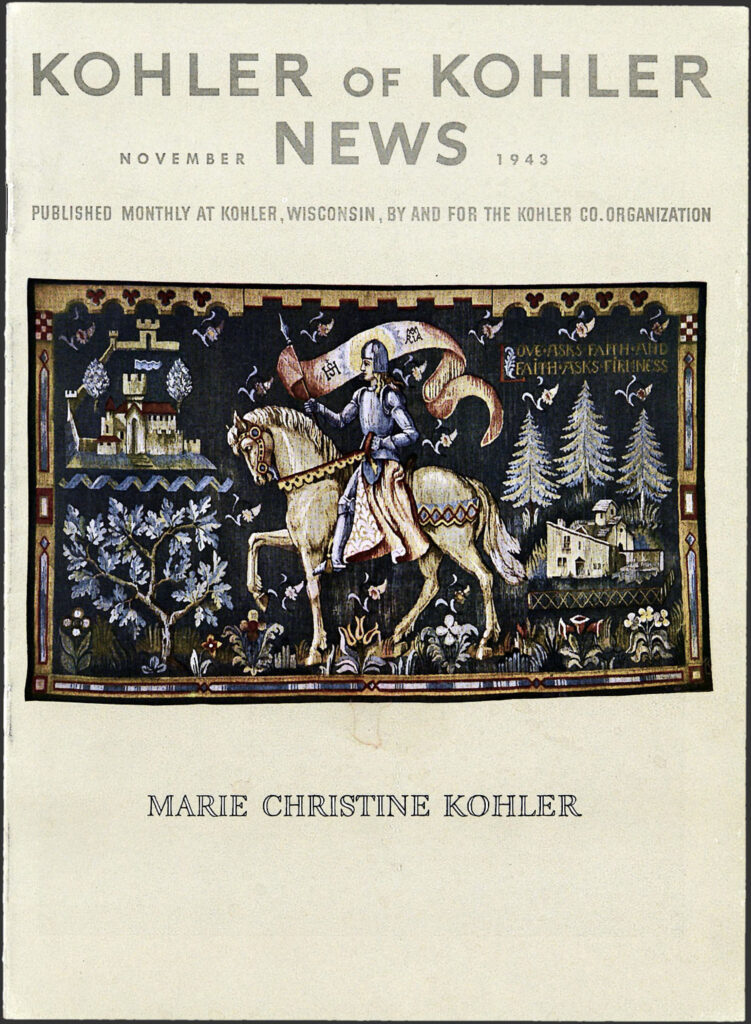
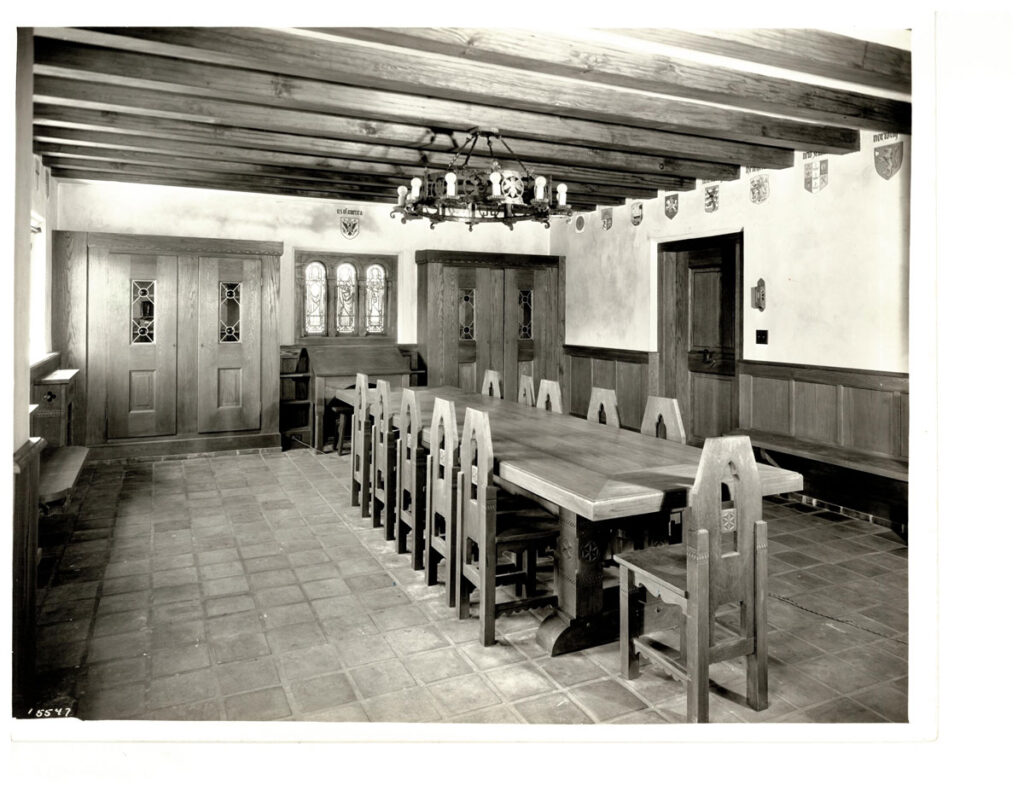
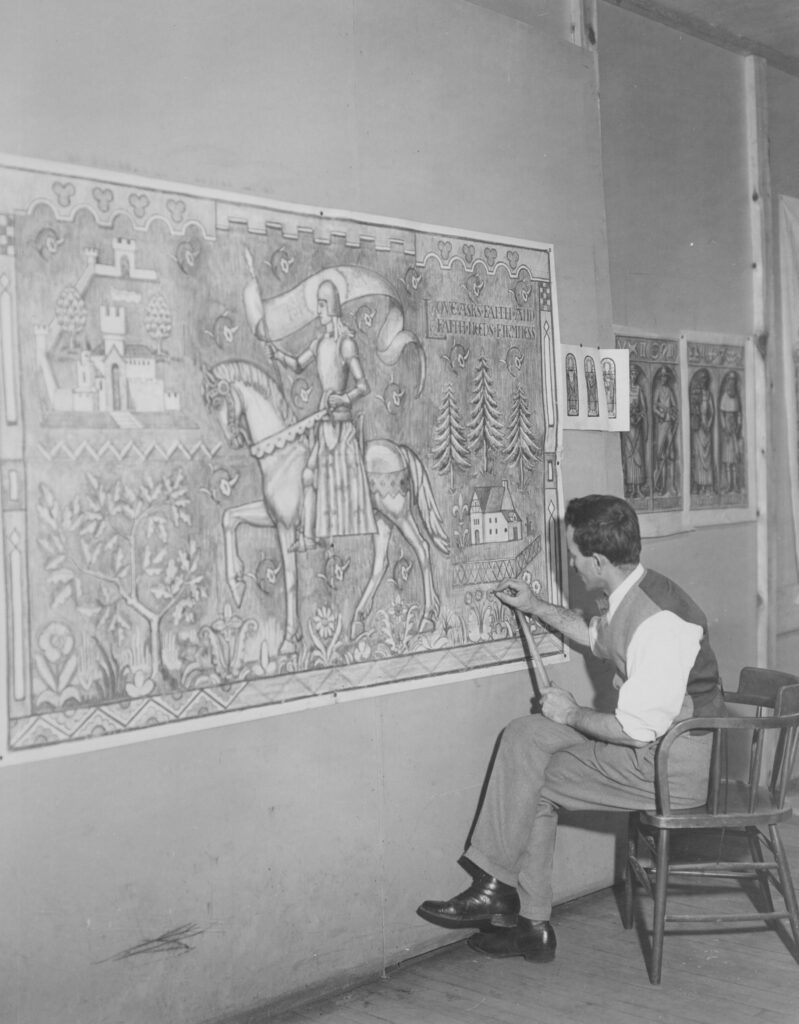
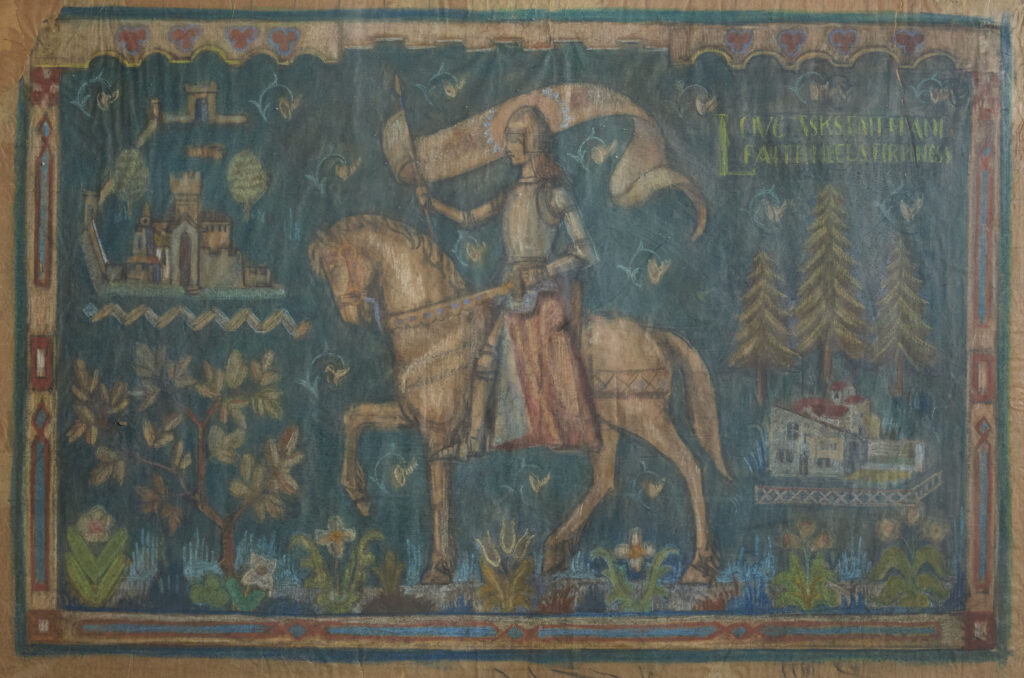
Part of the allure to Albrecht’s canon of work is his awareness of the region he is working in, a sensitivity that permeates his themes. The 1931 Kohler Demonstration House is a shining example of this “constructed of tan stucco, with green blinds, its window trim of white, its two rustic stained brown wooden porches, its flag stone paths, its fascinating conventionalized stencil design of deer and trees, its delightful garden—all combine to give it an old world charm and make it fit in admirably with its forest surroundings.” Kohler of Kohler News, July, 1931
Old Abe, the famed bald eagle and Civil War battlefield mascot of the Eighth Wisconsin Regiment from 1861to 1864 was created by Albrecht and prominently featured in the Wisconsin Room at the American Club. It too has a unique quality that feels all at once rural (carved in basswood) and deco at the same time with its geometric beak and talons.
The work that may most epitomize the architectural and industrial Art Deco style is the 1959 sculptured bronze bas-relief mounted in the entrance of the Memorial Theater in Kohler Village, commissioned by the Kohler Foundation. “It marked the completion of a major project envisioned by Walter J. Kohler, the establishment of a community theater in memory of his father John Michale Kohler and his two brothers, Robert and Carl Kohler. The bronze panel rises to ceiling height, in striking bas-relief is a figure rising from the mountains, clasping a torch. The mountains are the Austrian Alps. The figure represents the spirit of freedom and enterprise which brought John Michael Kohler as a boy from his native Austria to the United States. In a pioneer instance of industrial decentralization, moved the plant into the country, leading to the development of what now is the Village of Kohler.” People, August, 1959
Much like the Village of Kohler itself, Albrecht’s work and his artistic genius, have left a lasting impression evoking a spirit of modernism balanced with visual harmony.